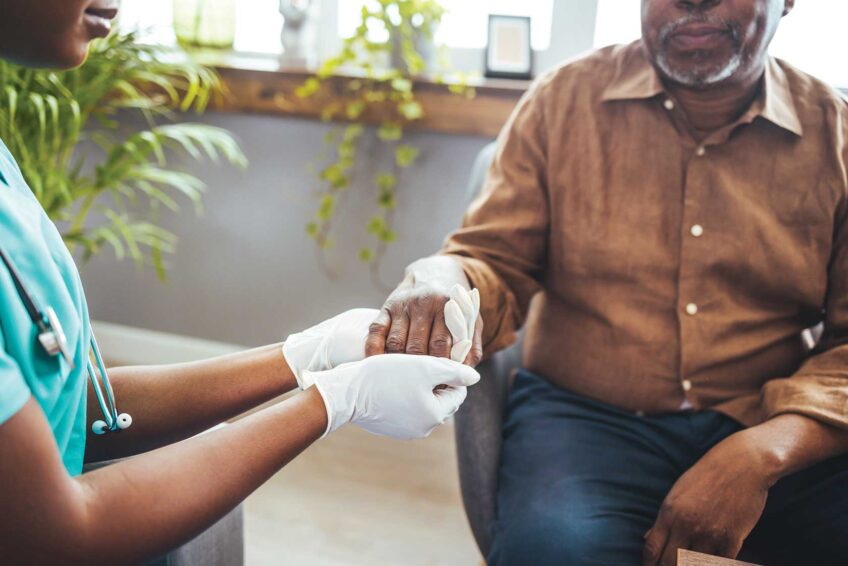Strokes still largely misunderstood
despite often debilitating, deadly consequences


Natalia S. Rost, M.D., M.P.H.
Associate Director, Acute Stroke Service
Massachusetts General Hospital
One would think that a disease that strikes every 40 seconds, kills 133,000 people a year and disables thousands more would get a little more attention.
Yet, stroke, the overall fourth leading cause of death in the United States, remains an enigma. Commonly known as a brain attack, stroke is a complex condition with a wide array of consequences that can permanently change a person’s physical and emotional well-being.
There are two types of stroke. Ischemic stroke is the most common with roughly 87 percent of the incidences. This type of stroke is caused by a blood clot that cuts off the blood supply to the brain. One of the biggest culprits is atherosclerosis — fatty deposits, or plaque, in the vessel wall. Over time the plaque can grow large enough to narrow the artery, causing the blood to flow abnormally — if at all.
The second type is called hemorrhagic stroke and occurs when the walls of a weakened artery rupture and cause bleeding in the brain. This kind of stroke is often triggered by high blood pressure. Although they constitute only about 13 percent of the cases, hemorrhagic strokes account for more than 30 percent of all stroke deaths, according to the American Heart Association (AHA).
In both types the brain is robbed of much needed oxygen and nutrients, and if left untreated, can cause irreparable damage. The AHA estimated in 2010 that the direct and indirect cost of stroke in the United States was almost $74 billion.
And strokes are not one-shot deals. Having one stroke increases the risk for another. Of the 795,000 strokes that occur each year, almost one-fourth are recurrent.
Regardless of the type, stroke can leave significant damage and is the nation’s leading cause of disabilities. The impairments depend on the severity of the stroke and where in the brain it strikes. Common consequences are partial paralysis, difficulty seeing, changes in behavior, reduced ability to speak and comprehend speech and memory loss.
Although anyone is a potential target, the typical patient is male, older than 55, or has a family or individual history of the disease. Blacks are impacted disproportionately by stroke and are twice as likely as whites to be afflicted.
Minorities are also targets at a younger age. In Massachusetts, roughly one-third of the deaths from strokes in blacks and Hispanics occur before the age of 64, compared to only 8 percent in whites, as noted in Massachusetts Deaths 2010, a report published by the Massachusetts Department of Public Health.
While stroke has fallen to the fourth most common cause of death for most in this country, it still remains the third leading cause of death among blacks. So common is this condition that a swath of Southeastern states (Alabama, Arkansas, Louisiana, Mississippi, North Carolina, South Carolina, Georgia and Tennessee) with large black populations is aptly called the “stroke belt.”
It is the stroke belt that intrigued researchers at Ohio University’s School of Public Health Sciences and Professions. They conducted a survey of African American residents of Mississippi aged 18 to 74 to determine their awareness of stroke, including symptoms and risk factors. Only one-fourth of those surveyed could correctly identify the five warning signs. Worse news is that 17 percent could not identify any.
Even worse, the respondents were unaware of the risk factors that can precipitate stroke. While most cited high cholesterol and smoking as factors, more than half failed to recognize lack of physical activity, excessive alcohol consumption and diabetes as causes.
Decreased awareness is not confined to the stroke belt. Several years ago, the Centers for Disease Control and Prevention (CDC) sponsored a study in 13 states and the District of Columbia to examine people’s awareness of the warning signs of strokes and the importance of seeking emergency care.
The CDC found that awareness varied by race, gender and educational status. Whites, females and more educated people were more likely to be aware of warning signs and more likely to call 911.
But overall, the results of the study were not good. Not even half of those interviewed could name the five major warning signs of stroke. Only 60 percent cited the headache as a warning of stroke. More puzzling is that 40 percent of the respondents incorrectly identified sudden chest pain as a symptom. Chest pain is attributed to a heart attack, not a stroke.
Though the death rate from stroke is falling, Dr. Natalia S. Rost, associate director of the Acute Stroke Service at Massachusetts General Hospital, is not leaping for joy just yet. Survival rates have improved largely due to advanced medical techniques rather than from control of risk factors.
There are five major symptoms of stroke: one-sided weakness, trouble speaking, trouble with vision, loss of balance or severe headache with no known cause.
But Rost warns not to wait for all to occur before seeking medical help. The five symptoms do not have to occur in unison to cause concern. “Even a single sign is worrisome,” she said.
Strokes start suddenly and without warning. “One minute you’re fine,” Rost explained. “The next you’re having trouble with your vision.”
Some experience transient ischemic attacks (TIAs), commonly called mini-strokes. In a TIA, a person can experience one or all of the symptoms of stroke. The symptoms typically last a few minutes and then subside.
Just 15 minutes
Researchers at the University of California, Los Angeles, recently found that for every 15 minutes faster that treatment with tPA for a stroke is received, a patient’s likelihood of discharge home improves by 3 percent and the likelihood of walking at the time of discharge improves by 4 percent. More significantly, death is 4 percent less likely.
That does not mean that you have dodged a bullet. People should consider TIAs as a warning. Up to 40 percent of all people who suffer a TIA will go on to experience a stroke, according to the National Stroke Association.
Treating strokes is a matter of timing. Those with ischemic strokes may be eligible for treatment with a clot buster called tissue plasminogen activator, or tPA, that helps re-open the vessel. But for optimal results the drug has to be administered within three hours of the onset of symptoms. A select few may still benefit after four-and-a-half hours.
“They have a better chance of recovery,” Rost explained. “Within three months patients who received tPA have better outcomes.”
Timing is not the only factor. The hospital of care is important as well. The Joint Commission is a nonprofit organization that accredits and certifies health care organizations and programs in the U.S. The Commission, as well as individual state health departments, have designated certain hospitals — Massachusetts General Hospital, for example — as primary or certified stroke centers. These hospitals are better staffed and equipped to diagnose and treat strokes more effectively.
Some research has shown that patients treated at approved stroke centers experience better outcomes. Furthermore, those who are eligible for tPA treatment are more apt to receive it at these centers.
The good news is that stroke is largely preventable. The culprits that increase its risk are high blood pressure and high cholesterol, obesity, diabetes, inactivity, smoking and heavy drinking. With increased awareness and effective treatments, the incidence should drop.
That’s when Rost will leap for joy.
For more information, read Signs and symptoms of a stroke and A closer look







